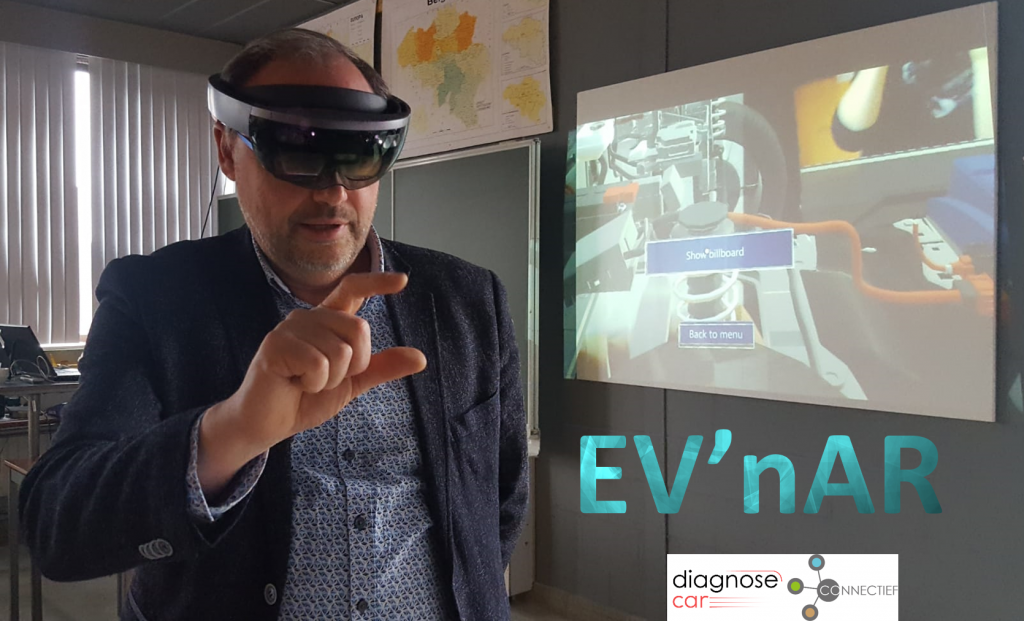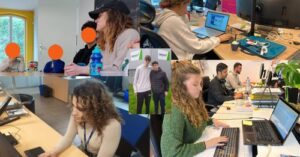EV’nAR is an augmented reality tool for the hololens developed by education for education. The rapid technological developments in the automotive industry present schools and teachers with many intellectual and material challenges. EV’nAR was developed for the direction of automotive technology more specifically for classes on electric vehicles where the following specific challenges arise:
1. The purchase of electric vehicles is usually financially impossible for technical schools. Moreover, technology is developing rapidly. Today’s large investment may already be obsolete in a few school years. One more reason for schools to hesitate.
2. If a school does have an electric vehicle available there are several barriers. Most electrical components are invisible in the vehicle (covered). For safety reasons, they are hidden. The hololens makes all components visible. Many teachers also admit that they are reluctant to allow students to work on such a vehicle because of the safety risks.
The possibility to teach on a holographic electric vehicle without any safety problems, sky-high costs and with all the visual possibilities is much appreciated by the Flemish teachers but also from the Netherlands the questions follow at high speed.
Goal
EV’nAR provides a didactic and budget-friendly solution for lessons in working safely with electric vehicles.
Didactic added value for education
The development of EV’nAR combined with the need for distance learning tools (cfr. challenges COVID 19) has woken up schools to the possibilities offered by augmented reality. As a result, new learning strategies are being developed where augmented reality has a role to play. The old system consists mainly of pre-teaching, teaching/evaluation and ends in the workplace. The cycle is complemented by technology that is gaining momentum including virtual reality and augmented reality.
We build up from blended learning and the application of VR within the school context to the learning of competencies in the workplace, supported by the integration of augmented reality applications.
Each learning form will by no means be applicable in every context, but through the different phases, we try to create a picture where VR and AR in the learning process reach their optimal point. (Strategy developed by Go! Technisch Atheneum Keerbergen, Steven Hendrickx))
The didactic added value of augmented reality with the hololens in a teaching situation is situated on different levels:
Classically, the teacher can teach with the hololens on. By streaming the image he/she can show all the components regarding the electric drive system of the car as well as how to de-energize it to the students. This possibility is also very useful for distance learning.
After the lesson, students can repeat the material at their own pace and test their ability to safely de-energize a vehicle.





